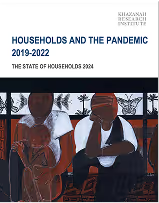
Conventional statistical measures show that the level of income inequality in Malaysia have been declining, but Malaysians are correct to perceive that inequality remains high and have widened.
An examination of the state of households is not complete without explicitly looking at the level and trends in economic inequality in Malaysia. Inequality matters: having a more equitable economic outcome is not just a secondary outcome of economic development, it is a central goal of development itself.
Thus, it is not surprising that inequality is a pressing concern for both policy-maker and the Malaysian public. These concerns are concurrent with the rest of the world, especially in advanced economies, where the 2008 Global Financial Crisis sparked a more salient appreciation of the high socio-political and economic costs of inequality. Interestingly, unlike many other economies in the rest of the world, income inequality in Malaysia has been decreasing rather than increasing.
The Gini coefficient – the most common statistical measure for income inequality – has been declining in Malaysia since the 1970s, only pausing briefly during the period of rapid industrialisation between the mid-1980s and late 1990s. With 1 being perfectly unequal (one household having all the income in the country) and 0 being perfectly equal (all households having the same income), the Gini coefficient for Malaysia has improved from 0.51 in 1970 to 0.40 in 2016.
This rosy picture of income inequality in Malaysia contradicts public perceptions on the ground. Intuitively, many of us will struggle to accept that economic inequality is less concerning now. There are at least two reasons for this discrepancy between statistical measures and perceptions on the ground.
First, it is crucial to distinguish between trends and level. Despite the increasing income inequality in advanced economies and the decreasing income inequality in Malaysia, the level of inequality in Malaysia is still considerably higher than many advanced economies. The Malaysian Gini coefficient is roughly 30 percent higher than the average of the advanced countries in the Organisation for Economic Co-operation and Development (OECD). It is even higher than the United States, which is one of the most unequal advanced economies in the world. In ASEAN, available statistics show that Malaysia is more unequal than most of our regional neighbours. Although inequality in Malaysia is decreasing, inequality remains high.
The second reason is that conventional indicators of income inequality - such as the Gini coefficient - measure the relative gap in household income. When overall household income increases, a narrowing relative income gap may be accompanied by a widening absolute income gap. It is precisely this that has happened in Malaysia: the relative income gap has declined while the absolute gap in income has increased.
.png)
To illustrate this point, consider that in 1970, the average income for Malaysian households in the top 20 percent of the income distribution (the T20) was about 10 times higher than households in the bottom 40 percent of the income distribution (the B40). In 2016, the relative gap narrowed: the average T20 income is now less than 6 times that of the B40. However, the absolute gap shows a striking contrast. Adjusted for inflation, the average T20 household went from earning roughly RM3,300 more than the average B40 household in 1970 to earning 13,200 more in 2016. If public perception is shaped by absolute income more than relative income, then this can help explain the mismatch between conventional measures and public perception.
In sum, despite the decreasing inequality observed in conventional measures, inequality remains high in Malaysia. Nevertheless, it is important to appreciate that income inequality is an outcome of other underlying socio-economic processes in development. To be effective, policies to address inequality would have to be aware of these underlying causes. Our subsequent articles will expand on some of these processes through trends in the Malaysian workforce and the broader economic development of Malaysia.















